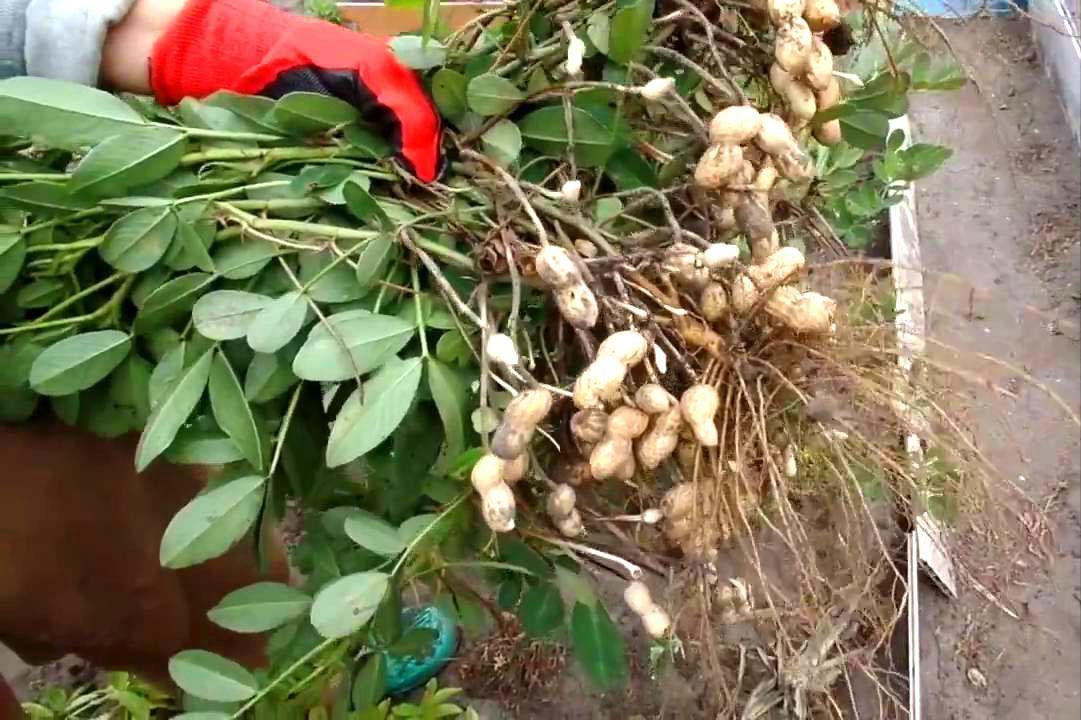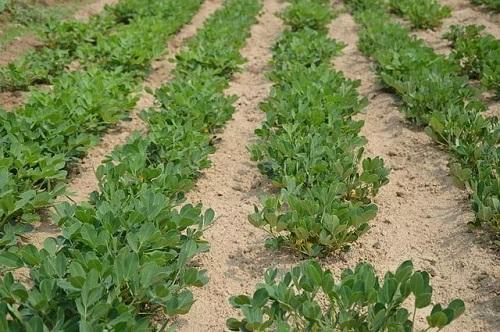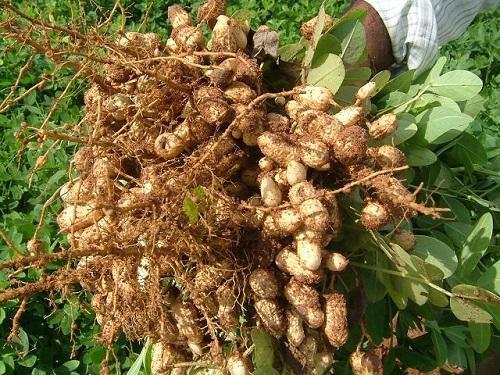Planting peanuts in the garden
 Peanuts can be found far from every household plot. This culture is still quite new for gardeners and many are scared off by possible problems. However, there is absolutely nothing to be afraid of here. Peanuts are less capricious than regular potatoes, and the only caveat when growing peanuts is their heat-loving nature. For this reason, in the northern regions, it is almost impossible to harvest from beans planted in the ground. In a cold spring, plantings will simply freeze out, and in a cool summer they will stop growing. But for regions with a warm climate, growing peanuts will not be a problem. The main thing is to know how to properly prepare the soil and plant peanuts in the garden, as well as take a little care of the plant until the harvest is ripe.
Peanuts can be found far from every household plot. This culture is still quite new for gardeners and many are scared off by possible problems. However, there is absolutely nothing to be afraid of here. Peanuts are less capricious than regular potatoes, and the only caveat when growing peanuts is their heat-loving nature. For this reason, in the northern regions, it is almost impossible to harvest from beans planted in the ground. In a cold spring, plantings will simply freeze out, and in a cool summer they will stop growing. But for regions with a warm climate, growing peanuts will not be a problem. The main thing is to know how to properly prepare the soil and plant peanuts in the garden, as well as take a little care of the plant until the harvest is ripe.
Where is the best place to plant peanuts?
For peanuts, it is necessary to take the lightest area so that the plantings are not in the shade. It is better if these will be the beds on which cabbage, cucumbers or potatoes were previously grown.
Do not plant peanuts after legumes.
It is advisable to fertilize the soil poor in trace elements:
- in the fall - bring under digging organic;
- in the spring, before planting, sprinkle nitrophosphate over the area (for each square meter of area, 50 g of the drug).
Selection and sowing of seeds

You should start planting peanuts only after the soil and air have warmed up well. Usually this is the middle of May, when the night frosts end, which can destroy heat-loving seedlings.
Before planting, peanuts are recommended to be peeled from the shell so that the beans germinate faster. It is desirable to use the largest specimens.
There are two ways to plant crops:
- In rows with a width of at least 60 cm, leaving about 20 cm between the bushes.
- In the holes, staggered after 50 cm, with a row spacing of 30 cm.
Planting care
One and a half weeks after the bushes bloom, they must be spud. In the future, repeat the procedure 3 more times after the same period of time. This must be done so that the beans do not crawl out to the surface of the earth, where they can dry out, because the culture ripens only in the soil.
Insofar as peanut loves moisture, regular watering should be ensured, especially during the flowering period and the setting of ovaries.
Harvest

By September, the peanuts ripen - the bush turns yellow, and the beans can be easily removed from the shell. Now you can harvest. To begin with, the bushes should be dug up and spread out so that they dry out. Then separate the beans along with the shells and dry them. It is necessary to store peanuts in a dry place, packed in fabric bags or in bulk in containers (layer thickness not more than 10 cm).
Growing peanuts takes a lot of effort. Thanks to the author who described the process and features in such detail. Developing the topic, I would like to note that for the subsequent processing of peanuts, machines and equipment will be required.